Hiragana is a Japanese syllabary, part of the Japanese writing system, along with katakana as well as kanji.

Soul Edge is a 1996 fighting game developed and published by Namco, and the first installment in the Soulcalibur series. Introduced at the JAMMA trade show in November 1995, the full arcade game was released in February 1996 on System 11 hardware, the same board used by Tekken and Tekken 2. Later in December an upgraded and expanded version of the game was ported to the PlayStation; this version was renamed to Soul Blade outside Japan and released in 1997.

The Okinawan language or Central Okinawan is a Northern Ryukyuan language spoken primarily in the southern half of the island of Okinawa, as well as in the surrounding islands of Kerama, Kumejima, Tonaki, Aguni and a number of smaller peripheral islands. Central Okinawan distinguishes itself from the speech of Northern Okinawa, which is classified independently as the Kunigami language. Both languages are listed by UNESCO as endangered.

Keio Flying Squadron 2 is a 1996 Japanese video game for the Sega Saturn. Developed by Victor Entertainment, it is a direct sequel to Keio Flying Squadron. While the first game is a side-scrolling shoot 'em up, the second game is a platformer with shooter sections.
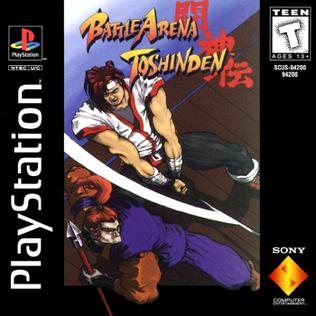
Battle Arena Toshinden, released as Toh Shin Den in Japan, is a 1995 fighting video game developed by Tamsoft and published by Takara for the PlayStation. It was one of the first fighting games, after Virtua Fighter on arcade and console, to boast polygonal characters in a 3D environment, and features a sidestep maneuver which is credited for taking the genre into "true 3D."

Japanese pitch accent is a feature of the Japanese language that distinguishes words by accenting particular morae in most Japanese dialects. The nature and location of the accent for a given word may vary between dialects. For instance, the word for "river" is in the Tokyo dialect, with the accent on the second mora, but in the Kansai dialect it is. A final or is often devoiced to or after a downstep and an unvoiced consonant.
The classical Japanese language, also called "old writing" and sometimes simply called "Medieval Japanese", is the literary form of the Japanese language that was the standard until the early Shōwa period (1926–1989). It is based on Early Middle Japanese, the language as spoken during the Heian period (794–1185), but exhibits some later influences. Its use started to decline during the late Meiji period (1868–1912) when novelists started writing their works in the spoken form. Eventually, the spoken style came into widespread use, including in major newspapers, but many official documents were still written in the old style. After the end of World War II, most documents switched to the spoken style, although the classical style continues to be used in traditional genres, such as haiku and waka. Old laws are also left in the classical style unless fully revised.

Battle Arena Toshinden 2, or Toshinden 2 (闘神伝2) in Japan, is a 1995 fighting video game co-produced by Tamsoft and Takara. Unlike the original Battle Arena Toshinden which was only for home systems, this sequel was originally a coin-operated arcade game for the Sony ZN-1 hardware, released in November 1995 and distributed by Capcom before its port to PlayStation shortly afterwards. It was also ported to Windows.

PythagoraSwitch is a 15-minute Japanese educational television program that has been aired by NHK since April 9, 2002. It encourages augmenting children's "way of thinking" under the supervision of Masahiko Satō (佐藤雅彦) and Masumi Uchino (内野真澄). A five-minute format called PythagoraSwitch Mini is also available.

Battle Arena Toshinden 3 is a 1996 fighting game developed by Tamsoft and published by Takara exclusively for the PlayStation. Released in December 1996 and globally in March 1997, it serves as the sequel to Battle Arena Toshinden 2. There were changes such as enclosed arenas and altered mechanics. The game also added a large selection of new characters, although most of them are merely palette swapped without their own movesets. The game received mixed reviews.

Taiko no Tatsujin is a video game series created by Namco. In the games, players simulate playing a taiko drum in time with music. The series has released games for the arcade and for console and mobile platforms including PlayStation 2, Advanced Pico Beena, PlayStation Portable, Nintendo DS, Wii, Nintendo 3DS, Wii U, PlayStation Vita, PlayStation 4, PlayStation 5, Nintendo Switch, Xbox One, Xbox Series X/S, Microsoft Windows, iOS, Android and Japanese feature phones.
The Saga dialect is a dialect of the Japanese language widely spoken in Saga Prefecture and some other areas, such as Isahaya. It is influenced by Kyushu dialect and Hichiku dialect. Saga-ben is further divided by accents centered on individual towns.

The Ibaraki dialect is a Japanese dialect spoken in Ibaraki Prefecture. It is noted for its distinctive use of the sentence-ending particles べ (be) and っぺ (ppe) and an atypical intonation pattern that rises in neutral statements and falls in questions. It is also noted for its merging of certain vowels, frequent consonant voicing, and a relatively fast rate of speech.

Dragon Quest X: Rise of the Five Tribes Online, also known as Dragon Quest X Online, is a massively multiplayer online role-playing game (MMORPG) developed and published by Square Enix. It is the tenth mainline entry in the Dragon Quest series. It was originally released for the Wii in 2012, and was later ported to the Wii U, Windows, PlayStation 4, Nintendo Switch, Android, iOS, and Nintendo 3DS, all of which support cross-platform play. Other than a discontinued Windows version in China, the game was not released outside of Japan. A single-player remake, titled Dragon Quest X Offline, was released in 2022 in Japan, followed by South-East Asia region on May 28, 2024 with additional South Korea, Traditional Chinese and Simplified Chinese languages support.
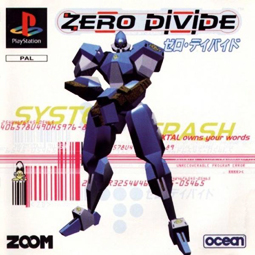
Zero Divide (ゼロ・ディバイド) is a 1995 3D fighting video game developed by Zoom for the PlayStation, originally released in August 1995 and also as a launch title in North America. A Windows PC port was later released, subtitled Techno Warrior in North America. Zero Divide has a robot theme and features mechanics similar to Virtua Fighter of the era; it was one of the earliest polygon-based fighting games, on home consoles coming only after Virtua Fighter, Battle Arena Toshinden and Tekken. The game received a positive reception and was especially popular in Japan, where it was later re-released in 2010 on newer systems through the PlayStation Network. It was followed up by a sequel, Zero Divide 2: The Secret Wish (1997).
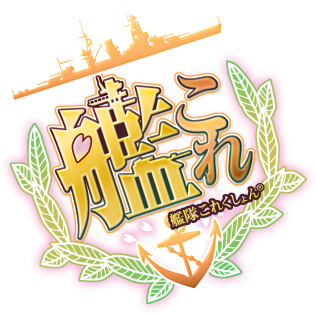
Kantai Collection, abbreviated as KanColle, is a Japanese free-to-play web browser game developed by Kadokawa Games and published by DMM.com.
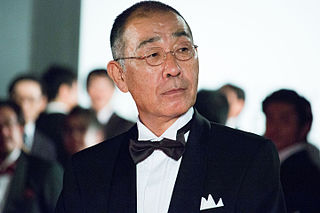
Denden is a Japanese actor and former comedian. He has appeared in more than 100 films since 1981.
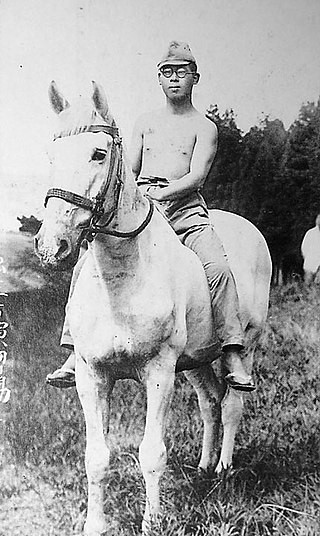
Takashi Yanase was a Japanese writer, poet, illustrator and lyricist. He was best known as the creator of the picture book and animated series Anpanman. Yanase was chairman of the Japan Cartoonists Association from May 2000 to 2012.

SaGa: Scarlet Grace is a role-playing video game co-developed by Square Enix and Studio Reel. The twelfth entry in the SaGa series, the game was published by Square Enix in 2016 for the PlayStation Vita. An expanded port subtitled Ambitions was released in 2018 in Japan and in 2019 worldwide for Android, iOS, Nintendo Switch, PlayStation 4 and Windows. The story follows four characters pursuing separate missions across the splintered remains of a dissolved Empire; central to the plot is the Firebringer, a rebellious deity defeated during the Empire's height. Gameplay focuses on the protagonists exploring the nonlinear world, taking part in turn-based battles where skill growth depends on chosen actions.
Nukitashi (ぬきたし), short for Nukige Mitai na Shima ni Sunderu Watashi wa Dō Surya Ii Desuka?, is a Japanese adult visual novel developed by Qruppo and released for Windows on July 27, 2018. An English version of the visual novel was released by Shiravune in June 2023. A sequel to the visual novel titled Nukitashi 2 was released in July 2019, with an English version being released by Shiravune in February 2024. A manga adaptation with art by Mameojitan was serialized online via Beaglee's Manga Ōkoku website from December 2020 to December 2023 and later also in Shueisha' seinen manga magazine Ultra Jump from November 2021 to February 2024. It was collected in six tankōbon volumes. An anime television series adaptation titled Nukitashi the Animation and produced by Passione has been announced.

















